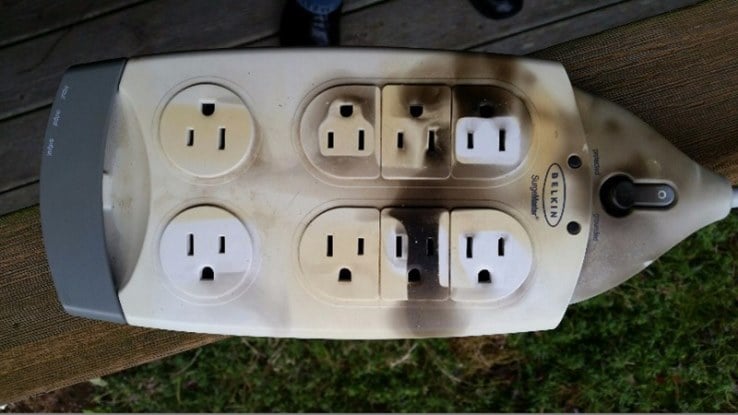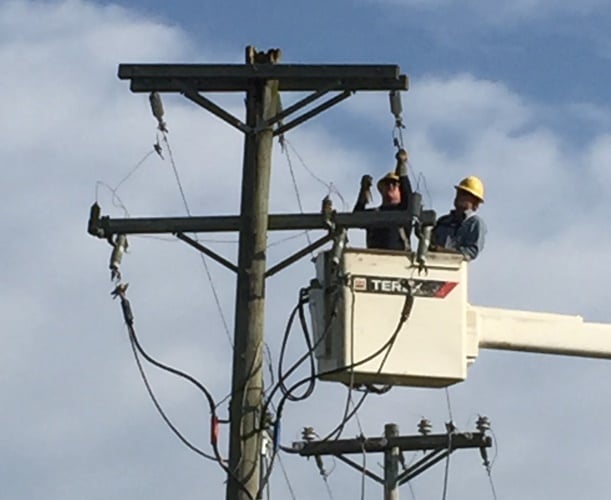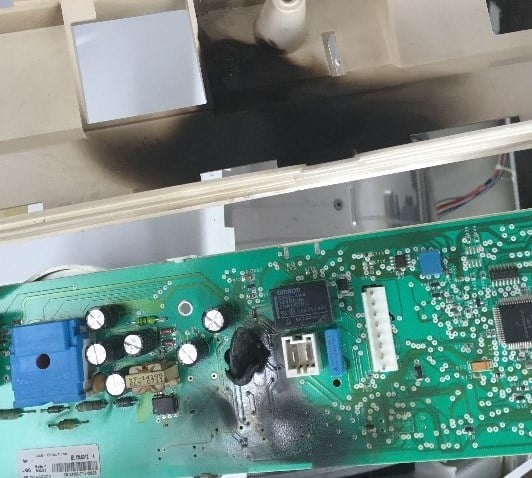Hurricane-force winds can cause significant structural damageand can knock out power lines, potentially causing surge damage inunprotected electronics and appliances when electricity isultimately restored. With Hurricane Irma having left more than 8million Florida and Georgia residents in the dark and HurricaneMaria cutting power to the island of Puerto Rico potentially formonths, insurance carriers should expect a high volume ofhurricane-related power-surge claims in its wake.
|1. Power-surge damage
Power surges often occur when power is restored following serviceinterruptions or outages. High winds during hurricanes (or otherpowerful storm systems) can lead to outages in a variety of ways.Some of the more common scenarios include falling trees bringingdown power lines, lines making contact with one another or withtree limbs, and power poles getting knocked over. Once a poweroutage occurs, the lines are void of electrical current. Uponrestoration of power, the electrical current rushes to fill the“empty space” in the lines (known as an inrush). Electronics andappliances are not designed to handle such power-flow fluctuations,and can be damaged during such events.
Related: Windblown: How hurricane force winds impact HVACsystems
|
Visible damage to a 10-year old surge protector that was nolonger functioning. (Photo: StrikeCheck)
|2. Surge-damaged consumerelectronics
Consumer electronics (TVs, gaming systems and computers, forexample) are all vulnerable to surge damage. Electronics use manyintegrated circuits, which handle everything from memory in acomputer to oscillation in a digital alarm clock. An integratedcircuit is commonly composed of many thousands (or even millions)of tiny transistors, resistors and capacitors. Any voltage surgeputs excessive stress on these components.
Point-of-use surge protectors can protect consumer electronicsfrom voltage surges; however, not all surge protectors are createdequal. Power strips are frequently mistaken for surge protectors,but provide no protection from surges, only adding additionaloutlets. Every surge protector is rated to absorb a specific amountof joules, and when the surge protector has absorbed that manyjoules, it will no longer provide surge protection. Some surgeprotectors include an LED indicator light to indicate whenprotection is no longer being provided, but many do not. Homeownersshould replace surge protectors guarding valuable electronicsperiodically to reduce the risk of surge-related damage.
|Of further note for property adjusters, it is important toalways evaluate items’ repair costs against their replacementcosts. While not always the case (as with high-dollar, custom-builtcomputers), it is often cost prohibitive to repair consumerelectronics.
|Related: Avoid getting blown away by wind damageclaims
|Surge damage to a control board of an electric dryer.(Photo: StrikeCheck)
|3. Surge-damaged appliances
Although appliance mechanical controls are generally notsusceptible to power surges, their electrical controls arevulnerable. Modern appliances are equipped with various electricalcontrols for everything from digital timers to custom speed ortemperature settings; these require many integrated circuits justas sensitive as those found in computers.
Despite electrical controls’ surge-damage susceptibility,appliance repair professionals can often replace control boardsrelatively easily. Unlike consumer electronics, appliance repaircosts are much lower (and therefore more often recommended) thanthe cost to replace the appliance.
|Related: When a tree falls, is there debris removalcoverage?
|
Linemen restore power to lines that were knocked out bywindstorm.(Photo: StrikeCheck)
|4. Risk management of wind-related surgedamage
Property owners should follow certain common-sense guidelines toreduce surge-damage risk for electronics and appliances. The firststep is to be sure valuable electronics are plugged into UL-testedsurge protectors, replaced periodically to ensure functionality inthe event of a storm. Second, when a power outage occurs,homeowners can unplug appliances and electronics to further reducethe risk of surge damage if an inrush of electrical currentoccurs.
When power has been restored to the property, the adjusterhandling the claim (or appropriate third-party expert) should besure to test all electronics for full functionality. A power outagedoes not necessarily equate to damage to all electronics andappliances in a home or business. Just as important, any damagedappliances may not require replacement and should therefore beassessed by a professional to determine the proper scope ofrepairs.
|You can review more information about electronics and appliancessusceptible to surge damage on StrikeCheck's website. You can also access labeled diagrams and other electronics andappliance claim resources.
|Related: 10 things your clients need to know about duststorms and ‘haboobs’
|Reza Nikrooz is the Chief Claims Officer of StrikeCheck andHVACi and oversees the operations of the companies’ claimsassessment services. He has nearly 20 years of experience in theinsurance industry. He previously held a Vice President position atICA, LP (Brown and Brown Insurance), was a Property Field Trainerat Travelers Insurance, and began his career as a claims adjusterfor State Farm Insurance.
Want to continue reading?
Become a Free PropertyCasualty360 Digital Reader
Your access to unlimited PropertyCasualty360 content isn’t changing.
Once you are an ALM digital member, you’ll receive:
- All PropertyCasualty360.com news coverage, best practices, and in-depth analysis.
- Educational webcasts, resources from industry leaders, and informative newsletters.
- Other award-winning websites including BenefitsPRO.com and ThinkAdvisor.com.
Already have an account? Sign In
© 2024 ALM Global, LLC, All Rights Reserved. Request academic re-use from www.copyright.com. All other uses, submit a request to [email protected]. For more information visit Asset & Logo Licensing.









